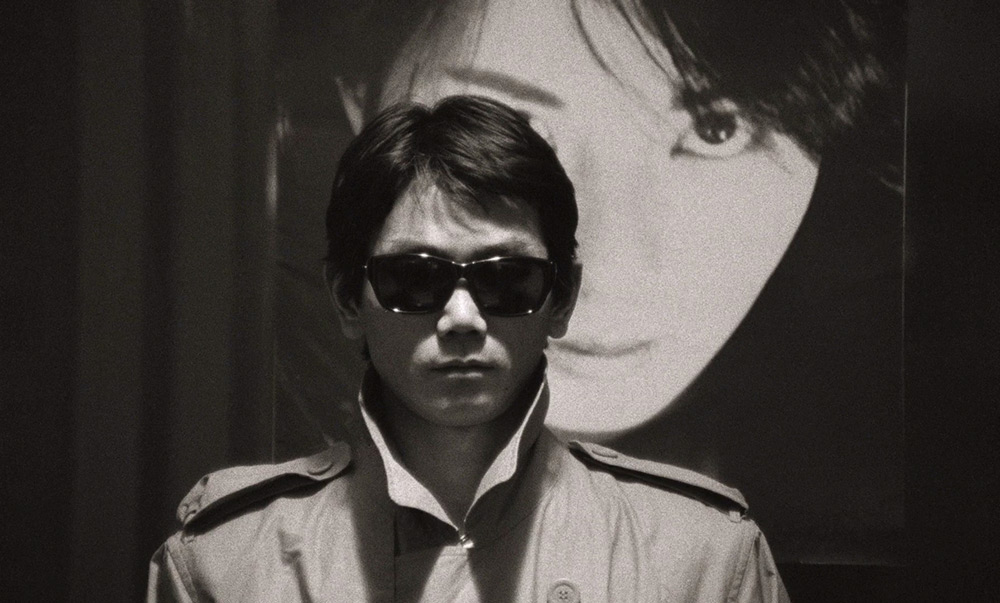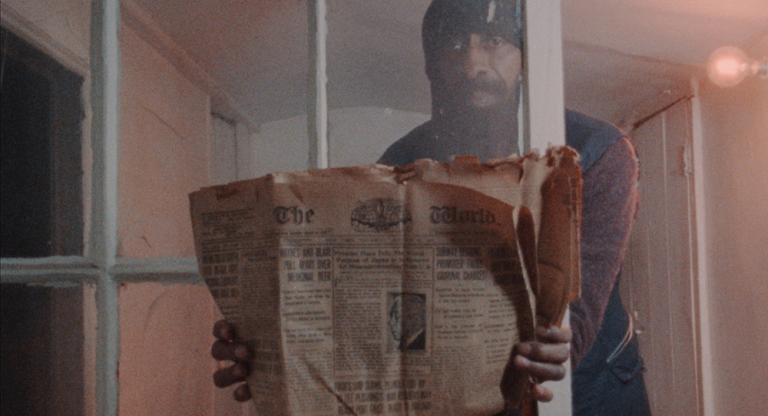A man leaves home, spends three years away, and returns to find everything is different. If that sounds like the setup to a joke or a riddle, you’d be correct in both cases. Mamoru Oshii’s The Red Spectacles (1987) feels like both a slapstick gag reel and a dystopian neo-noir thriller, the kind of left-field genre pairing you’d expect from a mind attuned to the protean nature of animation, or someone who isn’t entirely sure what kind of movie they’re making. Once again, in both cases, you’d be correct.
Oshii is best known for his animated work, from the landmark Ghost in the Shell (1995), to the beloved Urusei Yatsura franchise (1981–1986, which includes two movies), to the hypnotic Angel’s Egg (1985), a collaboration with the visual artist Yoshitaka Amano. Far less popular is his work in live action, in which category The Red Spectacles is his debut.
Set in an alternate-reality Tokyo where Germany won World War II, Oshii’s multimedia Kerberos Saga tells the stories of various members of the Anti Vicious Crime Heavily Armored Mobile Special Investigations Unit, nicknamed “Kerberos” after the three-headed watchdog of the Underworld in Greek mythology. They’re brutal paramilitaries in fearsome Third Reich-inspired exoskeletons but, generally, they’re the good guys. The Red Spectacles, which is the first of three Kerberos features, centers on Kōichi Todome (Shigeru Chiba), one such Kerberos cop. He is a former detective who becomes the last surviving “stray dog” following a government crackdown on the Panzer Cops and their subsequent failed rebellion, which eradicates the justice-seeking jackboots. The blurred line between righteousness and repressiveness is a common theme in Oshii’s work, and The Red Spectacles, like much of his work, embeds viewers with characters that uphold these contradictions. Only Todome escapes with his armor intact, but after three years abroad, the Tokyo he returns to no longer resembles the fascist one he left. Somehow, it’s worse.
Oshii depicts this literally, capturing Todome’s escape in the film’s opening moments by filming in color before switching over to monochrome, the result of a two-step process that involved shooting on black-and-white negative and then printing to color positive. It’s just one of the many visual inventions Oshii uses to conjure a noir nightmare that’s halfway between detective story and farce, live-action and human cartoon, serious and scatological, and Seijun Suzuki and Jean-Luc Godard. One recurring visual motif splits the frame in equal halves to suggest that seeing justice as a simple battle between good and evil rends the psyche in twain. Another uses fast-motion to create a chase scene that is akin to The Third Man (1949) by way of Benny Hill.
The film’s unsubtle mashup of textures and tones may be vexing to some, but to Oshii completists, his limited live-action experience and budget at the time (¥10,000,000 in 1987, which is about $83K, adjusted for inflation) are what make the film so unique. And, thanks to the 2,953 fans who supported last year’s crowdfunding campaign to restore the film in 4K, The Red Spectacles can now be seen in New York for the very first time. Oshii’s vision of dystopia isn’t gentle, but it isn’t hopeless or heavy-handed either. Whether you think the idea of a futuristic police state where noodles are banned for threatening “public order and standards of decency” sounds puerile or prescient, in both cases, you’d be correct about The Red Spectacles.
The Red Spectacles screens tonight, November 22, and on November 23 and 26, at Metrograph as part of the series “Mamoru Oshii Restored: Origins and Inspirations.”



